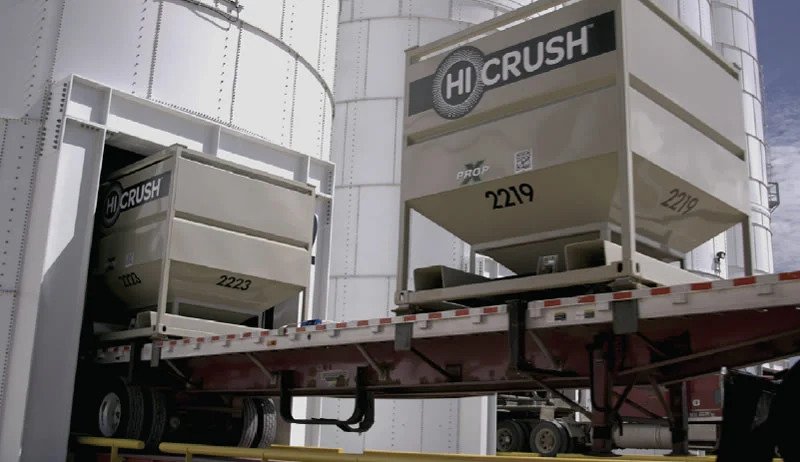Matching Last Mile Proppant Logistics to the Task is Central to Structural Cost Reduction in Hydraulic Fracturing
Every wellsite or pad presents challenges to frac sand logistics. Delays delivering the right sand to the blender can have significant repercussions that increase costs, complicate scheduling, and ultimately can affect execution for the frac job.
Last mile proppant logistics must address many variables, from proppant requirements such as mesh size and volume per stage; to road infrastructure, pad size, and even traffic congestion. The optimal solution depends on tailoring proppant logistics to the job with expertise, innovative equipment, and specialized software.
Matching last mile logistics to the task requires two basic tool sets for transportation, storage, and delivery to the frac-spread blender — silos and container systems.

Both systems fundamentally change safety and efficiency at the wellsite. Instead of depending on pneumatic systems to load silos, advanced gravity-fed conveyor systems rapidly transfer hopper bottom truck content to multiple top-loading silos using a telescopic, swivel-mounted discharge chute guided by live video. Efficient, reliable unloading of multiple silos for delivery to the blender is also performed with a specialized conveyor system.
Alternatively, containers arrive at the wellsite already loaded with sand and ready to be mated with dedicated conveyors to deliver proppant directly to the blender.
The advance to gravity fed systems achieves a significant safety improvement with the dramatic reduction in OSHA-regulated silica dust emissions compared to pneumatics systems that blow proppant using compressed air. Container systems that unload directly to the blender conveyor cut silica dust release by more than 90%.
Integration of silo/container options in a single last-mile proppant logistics process provides a high degree of flexibility in matching logistics to the task. Using silo systems, multiwell operations, and high proppant-intensity completions can rapidly establish massive storage capacity. In typical six-pack configurations, vertical silos can hold up to 1,680 tons on a small wellsite footprint. Using a unique erector trailer allows individual silos to be transported to the wellsite, and safely and quickly raised without a crane.

Containers holding 12.5 tons of sand each can be delivered two at a time and stored on site. The modular approach offers significant flexibility for economically supporting small volume, single well completions. Containers also have advantages when challenging roads and wellsites make it challenging to use silos. Because proppant is easily segregated, containers can enhance intricate frac designs using multiple sand sizes.
The orchestration and management of this complex process benefits from advances in specialized web-based and mobile-app software capabilities. Coordination between operators, service companies, sand suppliers, and others are enhanced by real-time data sharing, while a broad scope of data collection benefits long-term efficiency gains that further reduce costs.
Matching last mile proppant logistics to the task depends on an integrated solution based on advanced silo and container equipment and specialized software. The flexibility afforded by these systems opens new opportunities for a far-reaching structural cost reduction for hydraulic fracturing.

